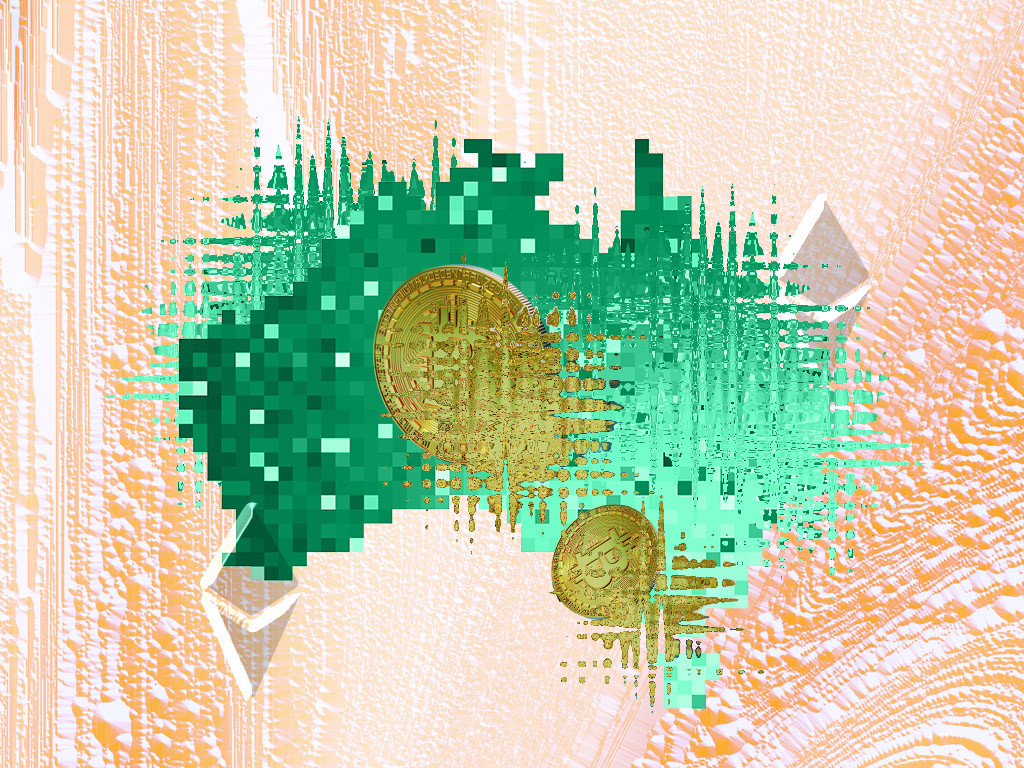This isn’t an article on ‘buying the dip’. I’d like to zoom out from the individual perspective of owning digital assets and take a look at the crypto ecosystem as a whole.
With significant monetary losses and high profile business failures in the industry dominating media headlines, some might think the current market collapse is proof that crypto is just a speculative asset class with no real value. However, this couldn’t be further from the truth.
If you take a deeper look, you will see that blockchain (the technology that underpins cryptocurrencies, Bitcoin and NFTs) is proving to be extremely resilient through its toughest challenge to date. In fact, the industry as a whole grows stronger with each cycle and, despite the chaos, we are seeing blockchain infrastructure remain robust as more users and businesses continue to enter the market.
Let me explain: cryptocurrencies are a volatile asset class. This shouldn’t be news to anybody who has been in this space for more than a few years. The market and, most importantly, the infrastructure that powers digital assets is also incredibly resilient.
Ethereum and crypto
Take the Ethereum blockchain, for example. Five years ago, it was an experimental, open-source platform that enabled decentralised projects to take flight. Despite a sustained fall in the value of ETH during this downturn, the platform continues to grow over the long term and go about its business every day without systemic failure. The underlying blockchain tech is passing the test of the 2022 crypto winter admirably. Like Bitcoin, there’s a strong case here to be bullish about the long-term survival of the platform.
What then of the high-profile failures, including Terra Luna and Three Arrows Capital? Let me clarify. Each had their own set of fatal flaws, and the crypto winter has exposed poor practices and obvious red flags (that unfortunately were only obvious in hindsight for the most part).
Terra Luna, a crypto token which collapsed in value in May this year, had a flaw in its underlying tokenomics that left it open to a likely planned ‘over-selling’ (shorting — or betting against the future performance of the asset, like Michael Burry in The Big Short).
Meanwhile, Three Arrows Capital (a crypto hedge fund which collapsed just two months later, in July) and other businesses that took traditional lending models and applied them to crypto were perhaps too exposed to Terra Luna. Terra’s collapse took out these businesses as collateral damage. Voyager Digital, another casualty of this crypto winter, has been subject to criticism for making a slew of potentially bad loans, and, like Three Arrows, was potentially overexposed to Terra Luna without being sufficiently hedged to weather a collapse in that asset.
These business models were created in the vein of traditional banks and what they all have in common is that they are services that relied on lots of liquidity (read: lots of cash moving around) in a boom market to grow and remain stable. Those with similar business models are being brought under pressure due to the bear market.
These learnings and market conditions give businesses an opportunity to now look inwards and focus on innovation and building.
Australia and crypto
In Australia, we’re seeing big financial institutions are still full steam ahead with crypto and blockchain integration. For example, Mastercard has announced a partnership with Blockchain Australia so it can further expand its reach in local digital finances and have a seat at the table when it comes to crypto regulation development.
ANZ Bank is continuing with its stablecoin project — a stablecoin pegged to the Australian dollar (A$DC). The Reserve Bank of Australia plans to develop a pilot program to explore use cases and potential economic benefits of a central bank digital currency (CBDC). Most recently, PayPal has revealed it is considering how to allow stablecoins to be used for payments on its network.
Are Australia’s largest institutions still jumping into crypto? They are for a number of key reasons — blockchain technology offers significant opportunities for efficiency and automation, their customers are increasingly interested in it and they risk falling behind if they don’t. Australia has a thriving crypto ecosystem and growing levels of consumer adoption.
Critically, crypto provides a once-in-a-lifetime opportunity for greenfield innovation. While global fiat currencies, like the Aussie or US dollar, remain unparalleled as liquid means of payment, the payment rails these assets rely on are legacy and dependent on walled gardens of interbank and central bank clearing houses. As such, innovation can only occur at the edges.
Blockchains
Open-source, public blockchains, on the other hand, offer an opportunity for unfettered access and true innovation on what will undoubtedly be the future of payments systems and potentially the entire internet. Innovation at this level will allow for far more efficiency and flexibility to the financial lives of Australians.
Traditional finance hubs (like banks) went through a similar process centuries ago before they became the nerve-centre of our current financial lives. Bank-runs, which can still threaten to render a bank non-functional, were a far more common occurrence. Blockchain will soldier on and DeFi will continue because the technology has already passed the test of a prolonged downturn in digital assets values many times before.
I’ll finish on the final obvious question many ask on this topic: what then of centralised exchanges like Kraken? Kraken itself is 11 years old. It will see through this winter, as it has seen through many others in the past. Like many other established exchanges, it has learned from the mistakes of those that didn’t make it — increasing security, reliability and transparency.
To that point, we are one of the only exchanges that publishes Proof Of Reserves, which means every Kraken user can verify that we have their assets in our wallets, and we’re still growing and building. We’re practising what we preach and we’ll be here for a long time to come.





